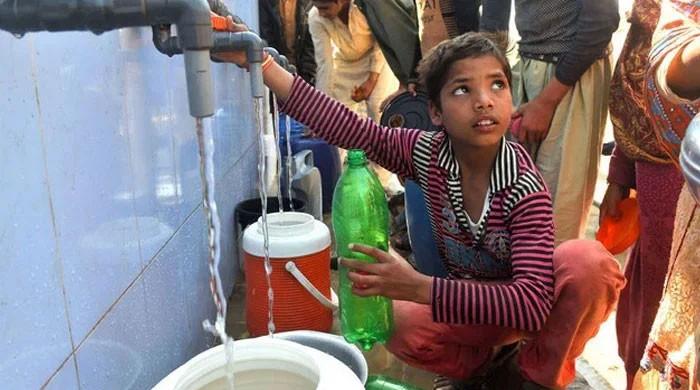Karachi Residents Grapple with Water Shortages Due to Power Outages
Residents of Karachi are facing increased hardship due to frequent power outages that are severely impacting the Karachi Water & Sewerage Corporation (KWSC), leading to significant disruptions in the city’s water supply, according to a KWSC spokesperson.
The spokesperson noted that power failures at KWSC facilities are a persistent issue. Shortly after power was restored at the Dumlottee Pumping Station, another outage occurred, which resulted in the suspension of water supply to areas including Malir Cantonment, Khokhrapar, and Memon Goth.
While the North East Karachi Old Pump House has had its power restored, several other key facilities remain without electricity, the spokesperson stated.
A power disruption occurred at the Dhabeji Pumping Station on Thursday at 10pm. The station has been inoperative for over 70 hours, exacerbating the water crisis, the spokesperson added.
Furthermore, two major pumps at the K-III Pump House are currently offline due to the ongoing power failure, which is significantly affecting water distribution in densely populated areas such as Nazimabad, New Karachi, Landhi, and Korangi.
“Consequently, the city has experienced a shortage of approximately 240 million gallons of water over the past 70 hours, intensifying the challenges faced by residents already struggling to meet their daily water needs.”
The KWSC has urgently requested that KE authorities promptly restore power to all affected facilities to prevent the crisis from worsening and to alleviate the hardships of the city’s residents.
KE’s Response to the Situation
KE issued a statement indicating that its teams were actively working throughout Karachi during the recent monsoon spell to ensure power restoration and public safety.
The electricity provider’s spokesperson mentioned that while most of their feeders remained stable, isolated outages were reported due to unauthorized connections, insufficient adherence to safety measures, and infrastructure overload.
“All such cases were immediately addressed, with field teams dispatched despite the rain. Restoration efforts were also prioritised at key water pumping stations, including Dhabeji and North East Karachi (NEK) old pumping station, which supplies water to limited areas.”
The spokesperson also stated that NEK-II and NEK-III remained operational throughout, and major supplies to the KWSC were functioning from KE’s end. However, a fault on the consumer side of the NEK old pump affected local supply.
KE’s ground teams were immediately sent to begin restoration work, and the fault was repaired. Teams were also actively deployed to the Dhabeji pumping station, but waterlogging presented challenges for the maintenance team.
He expressed condolences regarding the safety incidents reported during the first monsoon spell and clarified that five of these incidents did not involve KE infrastructure.
He highlighted that illegal tampering had created unsafe conditions in two instances. For example, the incident in Korangi 32-B occurred inside consumer premises while an electrician was repairing a water motor.
Similarly, the incidents in SITE Area, Surjani Town, and New Karachi Sector 11-J were traced to internal wiring faults within the respective premises.
“At Manghopir, no current leakage from KE’s system was found. In Korangi Sector 9, illegal shifting of a service bracket at under-construction premises led to an unfortunate incident, while in Clifton Block 5, an attempted theft of an underground LT cable damaged a feeder pillar box and cable, triggering the incident.”
He further noted that the incident in Lyari is under investigation, with initial findings indicating no connection to KE infrastructure. “KE urges the public to avoid any contact with power infrastructure, maintain a safe distance, especially during rains, and report unsafe conditions via 118 or KE’s WhatsApp service.”
The spokesperson emphasized that ensuring public safety as monsoon activity continues requires both operational vigilance and citizen responsibility. “Strict adherence to safety guidelines and timely coordination between utilities and civic bodies remain essential to minimising risk and maintaining urban resilience”.



Comments (0)
No comments yet. Be the first to comment!
Leave a Comment